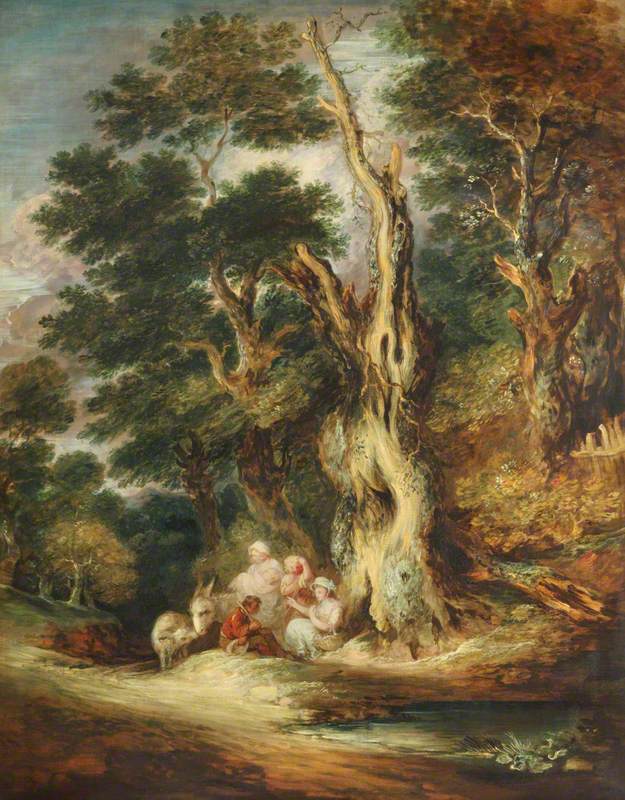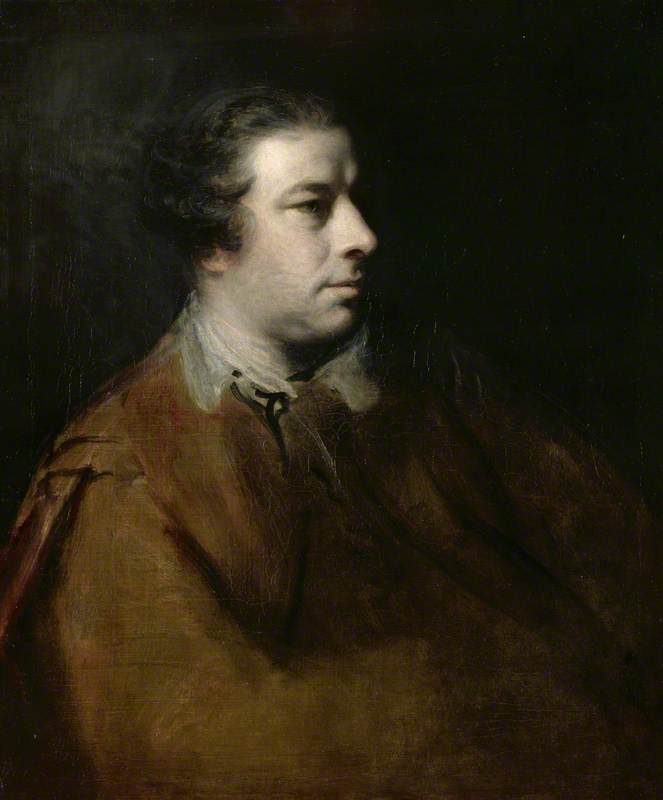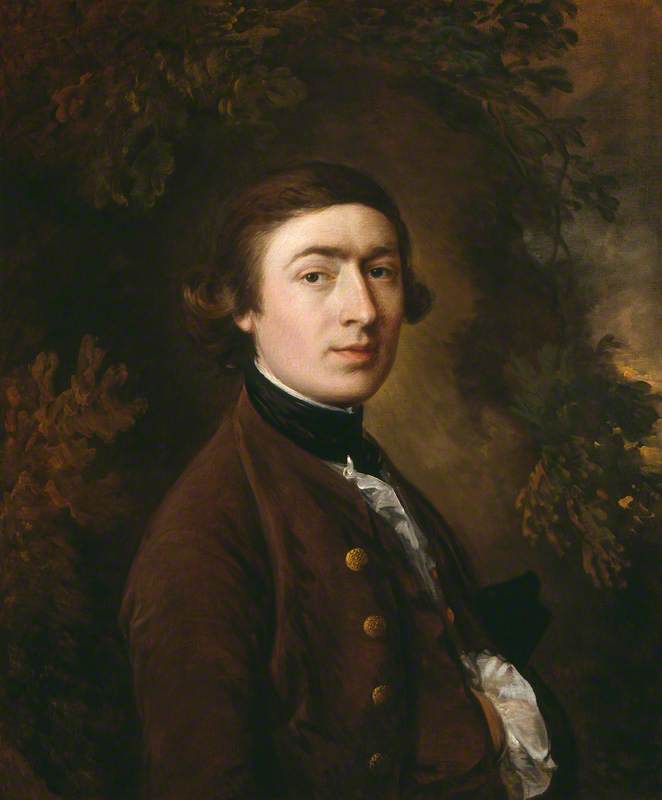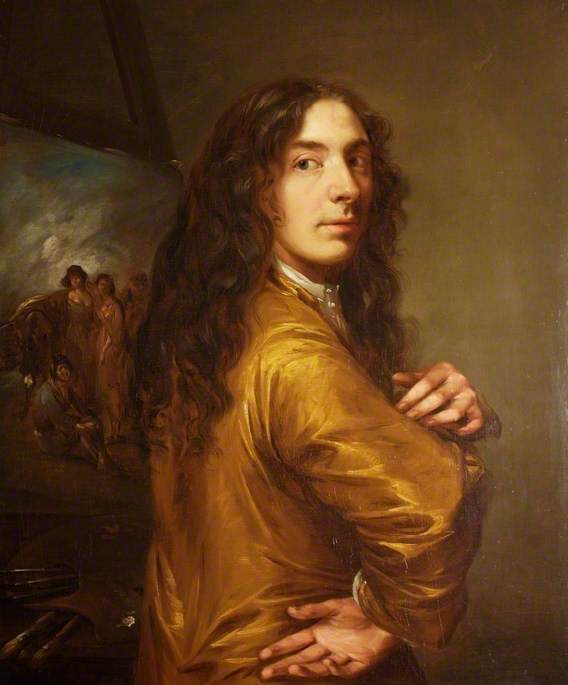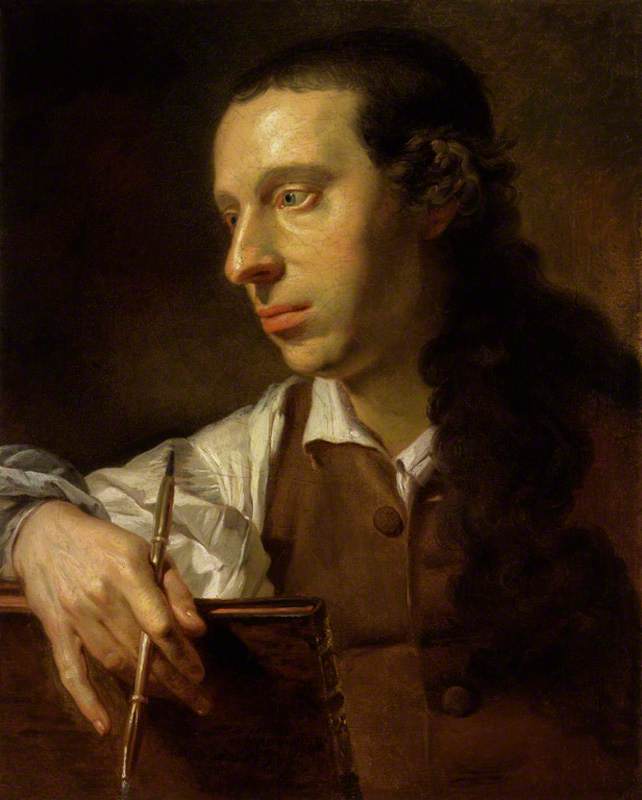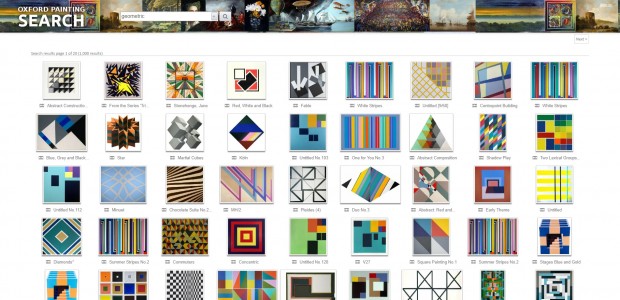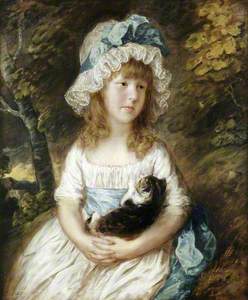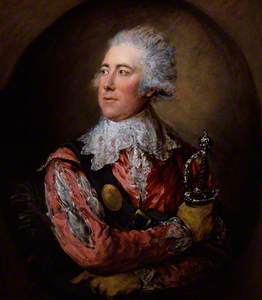Although the first document linking Gainsborough Dupont to his uncle is an apprenticeship contract dated 12th January 1772, it seems very likely he was a member of Thomas Gainsborough’s household in Bath from the mid-1760s.
Dupont’s mother, Thomas’s elder sister Sarah, had married Philip Dupont in 1745, and her fourth son, Gainsborough, was born in Sudbury, Suffolk on 24th December 1754. His parents no doubt thought that his uncle could give him a good start in life.
The earliest evidence of Dupont living with his uncle is a portrait, long misidentified and known as the 'Pitminster Boy', which shows the eager young teenager acting as a studio assistant, holding his uncle’s palette and nervously offering him one of his brushes.
On several occasions, Dupont seems to have served his uncle as a model for idealised portraits that have more in common with the artist’s so-called ‘fancy pictures’; these function as displays of virtuosity rather than projecting mere likenesses. It has been generally accepted that Dupont was the model for the famous The Blue Boy in the Huntington Art Collections in California, and he also modelled for other romanticised canvases. In contrast, the Portrait of Gainsborough Dupont, now in Memphis, shows Dupont less idealised, as a confident young man. Painted at about the time the sitter entered the Royal Academy Schools on 6th March 1775, the image was presumably made to send to his parents in Sudbury. Dupont’s other contributions to his uncle’s studio are difficult to determine.
In a letter, Gainsborough refers to a copy Dupont was painting of a portrait of Queen Caroline by John Vanderbank for the Earl of Sandwich to hang in the Town Hall at Huntingdon.
Caroline of Ansbach (1683–1737), Queen Consort of George II
(after John Vanderbank)
Gainsborough Dupont (1754–1797) 
During the 1780s, Dupont was employed painting small copies of his uncle’s portraits either as learning exercises or an anglicised liber veritas intended to document his uncle’s work. One, of Lady Mendip, is in the collection at Gainsborough’s House and another, of a future Duke of Norfolk, is in Plymouth Art Gallery. At this time he probably learnt to make mezzotints, though, never keen on reproductions of his work, Gainsborough discouraged their publication.
Thomas Gainsborough died on 2nd August 1788 and Dupont must have been instrumental in organising a posthumous exhibition of the contents of his studio nine months later. He remained living with his aunt and cousins, presumably using his uncle’s studio at the rear of Schomberg House, Pall Mall. When his adopted family decided to move to a smaller house, he set up his own studio in Grafton Street. Several of his uncle’s faithful clients came to him to have their portraits painted. For example, the second generation of Kilderbees and Hingestons, whose families had been close friends of Gainsborough’s in the early 1750s, commissioned portraits from Dupont rather than other artists.
Early in his career Dupont exploited his uncle’s reputation to great advantage by making multiple copies, especially after his uncle’s design for a portrait of William Pitt, and also by publishing the mezzotints he had put aside when he was working with his uncle.
William Pitt the Younger (1759–1806)
c.1790
Gainsborough Dupont (1754–1797) (and studio) 
The prints of King George III and Queen Charlotte are so plentiful that they must have provided a substantial income. At this time Dupont was painting original works in Gainsborough’s style; these canvases have since led to confusion between the work of uncle and nephew. Given the success of Gainsborough’s work in the art trade, especially in the 50 years straddling 1900, it is not surprising that many of Dupont’s works have been wrongly attributed to Gainsborough. Only through identification and careful examination of his work by the late John Hayes has Dupont’s artistic personality emerged.
The portrait of Mrs Hatchett – the daughter of John Collick, one of Gainsborough’s sitters – is signed with a Dupont monogram that was wilfully ignored for many years. Similarly the portrait known as 'Miss Brummell' at Kenwood was purchased as a Gainsborough but its style has all the characteristics of a painting by his nephew. Overall it lacks assurance, the brushwork fails to create the forms that are so characteristic of Gainsborough’s innate genius and the draughtsmanship, especially of the feeble cat, is wanting. The strokes of paint in the skirt are bold but repetitive and the colours lack the unerring harmony of Gainsborough’s work. So, without Gainsborough’s direct example, Dupont falters. (Editor's note: currently the attribution for this portrait at Kenwood House and on Art UK is with Thomas Gainsborough, and will remain so, subject to further research).
Miss Brummell
(traditionally identified as) c.1781–1782
Thomas Gainsborough (1727–1788) (attributed to) and Gainsborough Dupont (1754–1797) (attributed to) 
Gainsborough taught his nephew to paint in his style, though the subtleties of his handling were beyond Dupont’s abilities. As his career progressed Dupont gradually gave up imitation of Gainsborough’s fluency for his own more awkward and nervous style. His later work uses a rather acidic palette and the paint surface appears agitated and fails to convey a proper solidity and understanding of form. Dupont landscapes, however, have a freedom and a competence that show a sympathetic understanding of his master’s aims.
Nonetheless, those who wished for a ‘painterly’ portrait of good likeness in Gainsborough’s style commissioned Dupont. In 1794 and 1795 he painted a series of spirited portraits of famous actors for Thomas Harris, one of which is now in the National Portrait Gallery. In 1793 The Corporation of Trinity House wanted to decorate their new premises with a huge canvas showing a gathering of their governing body and gave the task to Dupont. With other full-length portraits of Lord Howe and the King and Queen, it remains in situ on Tower Hill.
William Thomas Lewis as Mercutio in 'Romeo and Juliet'
1794
Gainsborough Dupont (1754–1797) 
Dupont died on 20th January 1797, just after his 43rd birthday. Further study and correct identification of his works will yield more insights into his career. His name need no longer be a categorisation for works dismissed as not good enough to be by his master.
Hugh Belsey, independent scholar, curator, writer, broadcaster and lecturer, and former curator of Gainsborough's House in Sudbury



